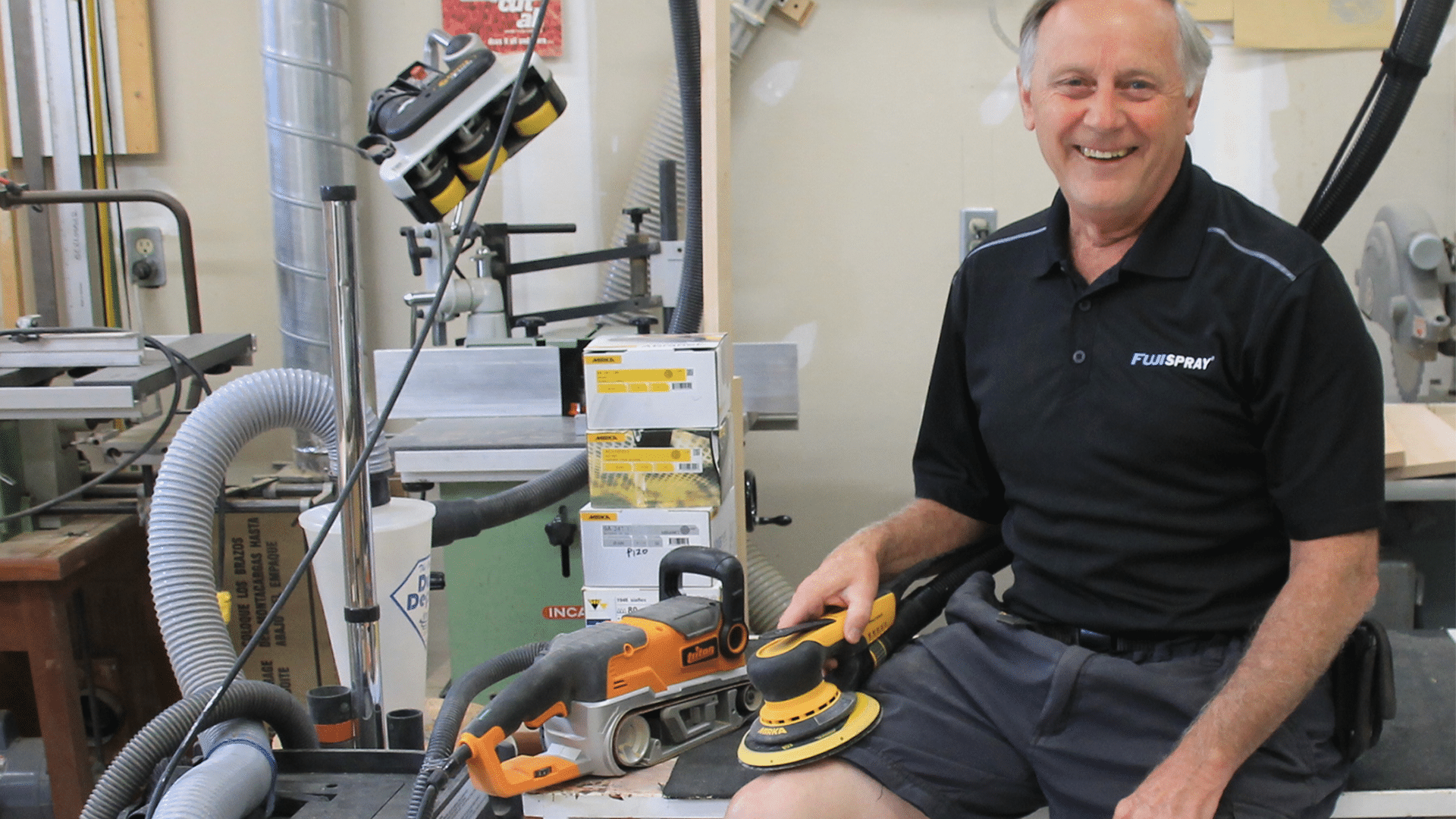
Sand Like A Pro
If there’s one topic that I keep receiving emails and queries about, it’s the “when”, “what grit and medium” and “how to” of sanding stained or clear coated work.
Before jumping into reading my article, if you haven’t yet done so, I’d encourage you read my previous article “Sanding: A Key Part of Finishing Prep”, where I went over a lot of background information on sanding.
Sanding Bare Wood
This is where the finishing process really begins, so we need to get it right!
Which Finish are you Wanting?
Sanding all starts by knowing what finish you’re planning to apply to your piece. In this article I’m going to focus on two of the most widely used finishes: 1) colouring the wood (dye stain, pigmented stain, paint); or, 2) keeping the natural wood colour. Let’s look at these, one at a time:
Colouring the Wood?
When colouring wood you have 4 options, each with their own sanding schedule:
- Option 1: Dye Stain (AKA Dye). Sand the bare wood down to P180 to tighten the grain then apply the dye stain.
- Option 2: Pigmented Stain (AKA wiping stain). Sand the bare wood down to P160, but if the wood is one of those species known to blotch when stained (e.g., cherry, maple, pine…), then continue sanding to P180 to tighten the grain. In either case, apply a heavily thinned coat of the sealer of your choice (I recommend a ½ lb cut of shellac, but many use a 50/50 waterbased sanding sealer or stain base and tap water mix) to help even out the stain coat. This process is also referred to as conditioning or blotch control. Once the sealer has dried – usually in 20 minutes – lightly sand by hand with the same grit as before, then apply your stain.
There is no need to purchase a separate wood conditioner or blotch control product; thinned sealer or stain base works just as well and is less expensive.
- Option 3: Paint. Sand the bare wood down to P180 to tighten the grain. Apply a primer coat then once dry, sand again to P180. Conversely, if the paint manufacturer recommends against a primer coat, go directly to applying coats of paint. After the first coat of paint, sand again down to P180 before proceeding with applying subsequent coats.
The only time I recommend against sealing the wood is if you’re planning to paint it, as the paint itself (or the primer) acts as a seal coat.
- Option 4: Pigmented Lacquer. Sand the bare wood down to P180, just as you’d done if applying paint. Apply a coat of sanding sealer, then when it’s day, sand it with a grit between P300 and P600 (or whatever grit is recommended for the pigmented lacquer you’ll be using). Apply the required numbers of coats of pigmented lacquer. You shouldn’t have to do any more sanding unless you’ve created some runs, sags or had the surface contaminated (insects, hair…).
Keeping the Natural Wood Colour
If your objective is to retain the natural wood colour and emphasize its grain features, you’ll want to apply a clear finish. Start by sanding the bare wood to P180. Although some go directly from sanding to applying the protective topcoat, I prefer to seal the wood first. This additional step, although it adds a bit of time to the finishing process, improves the topcoat’s ability to bond properly to the wood.
Sealing the wood
Whether you have applied any type of colorant or are keeping the natural wood colour, you’ll want to seal it before moving on to applying a protective topcoat. This can be either shellac or a sanding-sealer. I usually recommend applying full strength coats of sealer before proceeding with sanding the surface in preparation for topcoating. For natural wood pieces, only one coat is needed. For stained wood, apply an additional coat before sanding, as that will greatly lessen chances of sanding through the stain coat and into the wood.
Above all, though, ensure the sealer you reach for is compatible with all the finishing products used on your piece. Failing to do so may result in delamination of the finish, or cracking and such defects.
Once the seal coat has dried, sand it with a grit between P300 and P600 (or whatever grit is recommended for the topcoat you’ll be using), before applying the protective topcoat. I personally use P600 unless the finish manufacturer advises otherwise.
When sanding stained pieces, I like to sand using a foam-backed sanding pad. These pads conform to profiles and edges, where sanding through to bare wood can be especially problematic.
Applying a Protective Topcoat
I usually spray the first coat of topcoat and allow it to dry to the touch before checking to see if any further sanding is necessary. I’ve found that by using quality finishing products and sandpaper, that unless I create any runs or sags, or if any contaminants (e.g., insects, my own hair, dust particles) land on the finish as it is drying, sanding between coats is unnecessary. But on those rare occasions when it is, sand it by hand, using only light hand pressure, with any grit between P300 and P600 (or whatever grit is recommended for the topcoat you’ll be using).
I hope that this additional information will prove helpful in getting that “killer” finish we all look for.
I’d also encourage you to leave any comments or questions you may have on this article, or to provide suggestions on topics you’d like me to address in future articles. I’m here for you!


